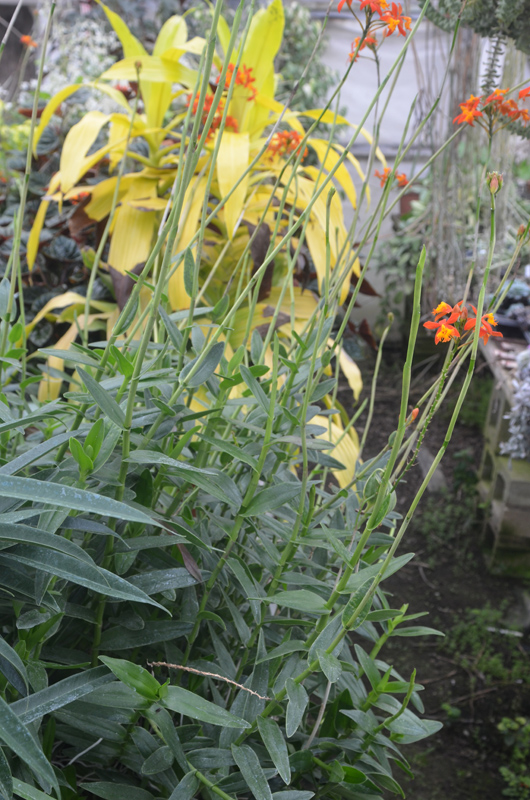
Tropicals > Epidendrum > Epidendrum x obrienianum > Epidendrum x obrienianum
Epidendrum x obrienianum
Butterfly Orchid
Origin: Propagated from two different parent plants, which would never co-exist in nature. The female parent is E. jamiesonis, which grows in Ecuador. The male E. radicans, grows throughout Central America. Naturalized in Hawaii.
| Family |
| Orchidaceae |
| Genus |
| Epidendrum |
| Species |
| x obrienianum |
| Category |
| Tropicals |
| USDA Hardiness Zone |
| 11 |
| RHS Hardiness Zone |
| H1c |
| Temperature (°C) |
| 5 |
| Temperature (°F) |
| 40 |
| Height |
| 50-100 cm |
| Spread |
| 20-50 cm |
Photographs
Description and Growing Information
Flowering Period
| General Description |
| Upright terrestrial orchid with large clusters of bright orange flowers. Smooth green foliage and thick white terrestrial and aerial roots, emerging occasionally from the lower stems. |
| Landscape |
| Can be used as a background plant in tropical environments. |
| Cultivation |
| Prefers a very light media with abundant air space. Must be kept moist, and never fully dry out, and when growing in a container, requires frequent fertilizing with a high nitrogen fertilizer. Plants require adequate sunlight, and will tolerate direct sun, however roots should be sheltered if possible. |
| Shape |
| Upright in form. |
| Growth |
| Medium |
| ID Characteristic |
| Bright orange clusters of flowers. |
| Pests |
| Can be affected by many common pests, the greatest danger to this plant like most orchids is the possibility of an Erwinia bacterial infection, which can kill a plant in days if not properly dealt with. |
| Habitat |
| Genus is noted for aggressively colonizing disturbed areas. Epidendrum x obrienadum is a terrestrial orchid, only growing in humid hot areas. This plant was produced artificially from two different parent plants, and has no natural habitat. |
| Leaf Description |
| Produced alternately and on opposite sides of stems, a long sheath originating at the next lowest leaf abruptly ends where a fleshy ovate leaf emerges perpendicular to the stem. Leaves emerge from the tip of the stem erect and are forced horizontal as the next leaf or flower spike grows. |
| Flower Description |
| Vibrant orange flowers are produced in a dense raceme at the end of flower spikes, forming a rounded appearance. The orange petals and sepals grow from the same point out from the column. The column is straight and extends from the petals ending at the lip, which grows into a large frilled orange cross. |
| Fruit Description |
| The ovary matures into a capsule, dehiscent 3 times filled with millions of microscopic seeds. |
| Colour Description |
| Foliage can be a lime green to a deep green. Flowers are generally orange, but can appear reddish. |
| Texture Description |
| The stems have a fine texture, interrupted by more rough looking aerial roots. Very fine textured flowers. |
| Propagation |
| Keikis, cuttings and division. |
